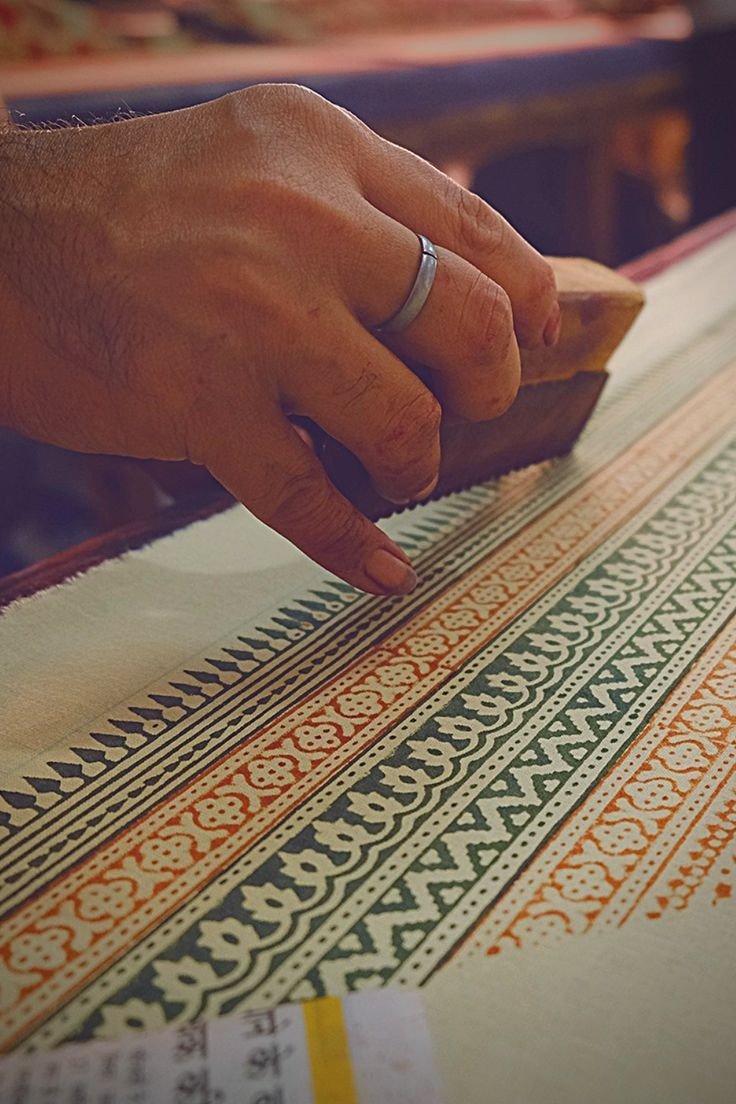
In an age where digital prints are churned out with pixel-perfect precision, there’s something undeniably magical about the art of handblock printing. It’s a craft that blends the charm of tradition with the beauty of imperfection, celebrating human touch in a world increasingly steered by machines. For those who don’t know, handblock printing is the technique of applying designs to fabric using hand-carved wooden blocks. Each piece tells a unique story, and the process behind it is just as captivating as the art itself.
A Journey Through History
The origins of handblock printing date back thousands of years, with roots in ancient civilizations from India to China. India, in particular, has preserved this craft through generations, especially in places like Rajasthan and Gujarat, where artisans have passed down the skills of carving and printing like family heirlooms. These craftspeople don’t just create prints; they preserve a heritage, often spending years perfecting their skills, using techniques that have changed little over the centuries.
To learn more about the fascinating history and origins of handblock printing, including its cultural significance across different regions, visit:
The Heart of Handblock Printing: The Block
The beauty of handblock printing lies in the intricacies of its wooden blocks. Skilled artisans painstakingly carve these blocks, typically made from teak or rosewood. The carving is no small feat—it requires a steady hand, sharp eyes, and years of practice. Designs can range from floral and paisley to geometric and abstract, each with its own character. The artisans use chisels and other tools to create patterns on the block, which can take anywhere from a few hours to several days to complete.
The Art of Dye and Color
One of the defining features of handblock printing is its use of natural dyes. Derived from plants, minerals, and even insects, these dyes give the fabrics rich, earthy colors that synthetic dyes simply can’t replicate. Indigo, madder, turmeric, and pomegranate are commonly used to create deep blues, reds, yellows, and greens. The dyeing process itself is an art, often involving boiling, mixing, and careful timing to achieve just the right shade.
The Printing Process: Rhythm and Repetition
Watching a handblock printer at work is like witnessing a dance. The artisan dips the wooden block into the dye, then presses it firmly onto the fabric, making sure each impression aligns perfectly. With rhythmic movements, they repeat this process, block by block, row by row. The sound of the block meeting fabric, accompanied by the subtle scent of natural dyes, is strangely calming. Each piece is unique because no two impressions are identical. The slight variations are a testament to the human touch, giving each piece character and authenticity.
- The Appeal of Imperfection
In a world that often values flawlessness, handblock printing celebrates the beauty of imperfection. Unlike machine prints that can look uniform and exact, handblock prints have subtle irregularities. These “imperfections” make the fabric feel alive, each piece carrying a sense of individuality. It’s this soulful quality that draws people to handblock-printed items, whether they’re bedspreads, dresses, or scarves. Each item feels like a piece of history, as if it holds the artisan’s story within its fibers.
Preserving a Living Tradition
The art of handblock printing faces its own challenges in today’s world, from the competition with machine-made products to the struggles of traditional artisans trying to make a living from their craft. Thankfully, the resurgence of interest in sustainable and handmade products has sparked a renewed appreciation for crafts like handblock printing. Many designers and ethical brands are partnering with artisans to bring this traditional art into the modern world, creating pieces that blend ancient techniques with contemporary styles.
- Why Handblock Printing Still Matters

Choosing handblock-printed fabrics is more than a fashion choice; it’s a way to connect with a rich cultural heritage. Every piece purchased supports the artisans who have devoted their lives to this craft. It helps sustain their communities and keeps their art alive. In a world that moves at breakneck speed, handblock printing reminds us of the value of slowing down. It reminds us of the importance of putting heart and soul into creation.
So the next time you come across a handblock-printed fabric, take a closer look. Notice the depth of the colors, the texture of the fabric, the slight inconsistencies in the pattern. It’s a piece of art crafted with patience and passion—a small piece of a centuries-old tradition that, against all odds, still finds a way to thrive. Moreover, in a world so often preoccupied with the new, that’s something truly special.
Handblock printing is deeply rooted in tradition. Other fascinating textile arts, like Kalamkari, also share a rich history of handcraftsmanship. If you’re curious about the differences between Kalamkari and block printing, including their unique techniques and cultural significance, explore our detailed comparison in:



